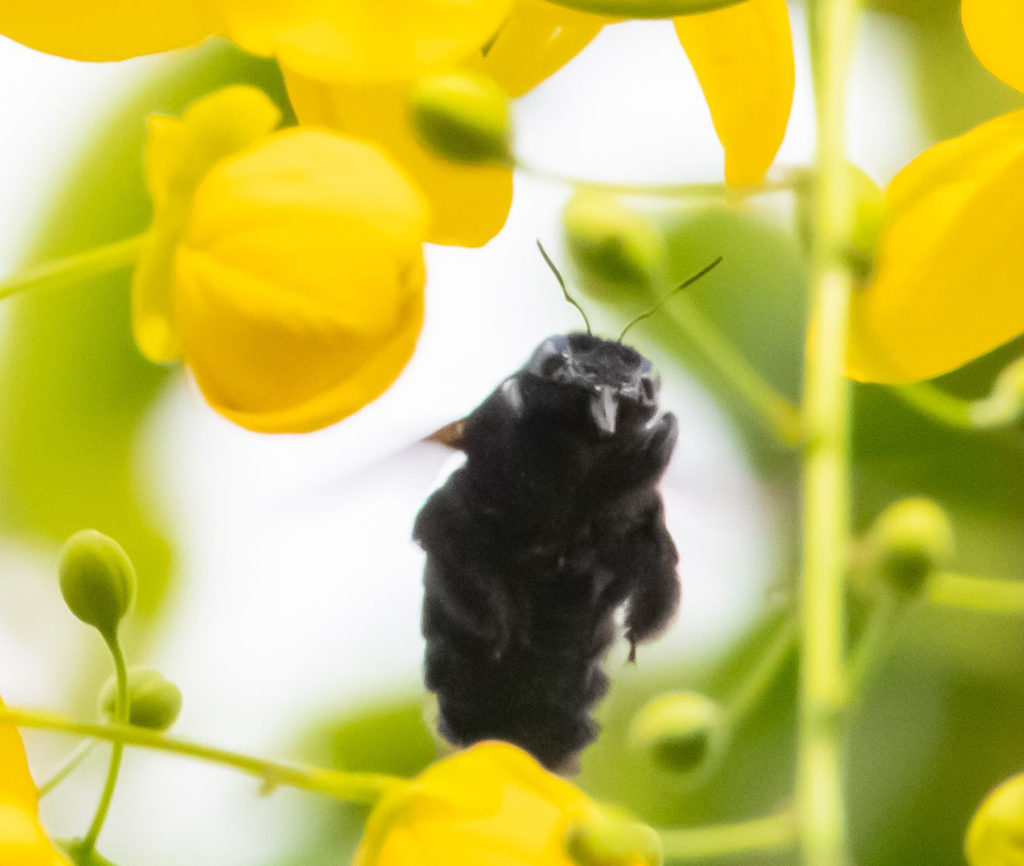
The Cassia fistula tree in my yard has finally lived up to its nickname, Golden Shower.
I planted it from a seed I was given by a friend quite a few years ago, without knowing much about it. It grew pretty quickly, but didn’t produce any flowers. I guess I had planted it too close to a mango tree, so it got overshadowed and had to grow tall to try to get more sunlight. Then Hurricane Irma removed the mango tree.
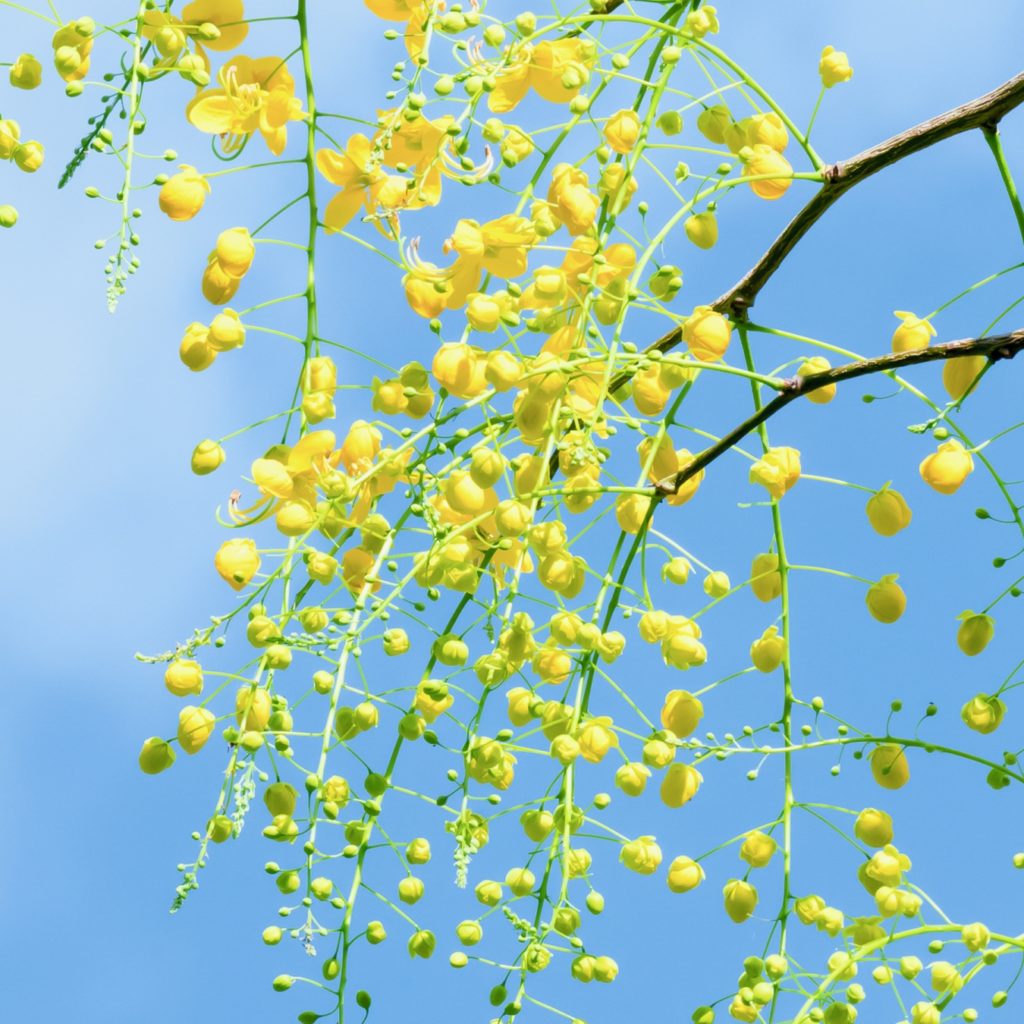
I first noticed the tree was flowering when I heard bees humming above my head. I was thrilled when I looked up and saw the first delicate yellow blossoms trailing down. The dangling flowers are so dramatic you can easily see why people wanted to transport the seeds from Asia.
Even though it is not native, the local carpenter bees seemed quite enthusiastic about visiting the flowers. I have often seen these large, shiny black bees on other flowers, but never so many at once.
As they left the tree one by one, the bees all flew off in the same direction. I thought they might have a hive over that way. When I read about carpenter bees, though, I learned that was wrong. These are actually ‘solitary’ bees, meaning they don’t live in organized hives like the ‘social’ bumblebees and honeybees.
Still, they might have been nesting in the same area. The female carpenter bee bores a hole into deadwood and makes small chambers inside where she places her eggs. She doesn’t eat the wood, just tunnels into it. She puts one egg in each chamber, with a rolled-up ball of pollen and nectar. Then she seals over the entrance. If the nests from different carpenter bees are close together, the young ones will be close to each other when they emerge, which is convenient for mating.
Another thing I got wrong was thinking that all of the local carpenter bees are black. In fact it’s only the females. The males are a rusty orange color all over. I have never seen any bees like that, maybe because the poor things die right after mating.
Then I was confused because some of the black bees had yellow on their backs. What was that about? Were some of them bumblebees? That didn’t make sense.
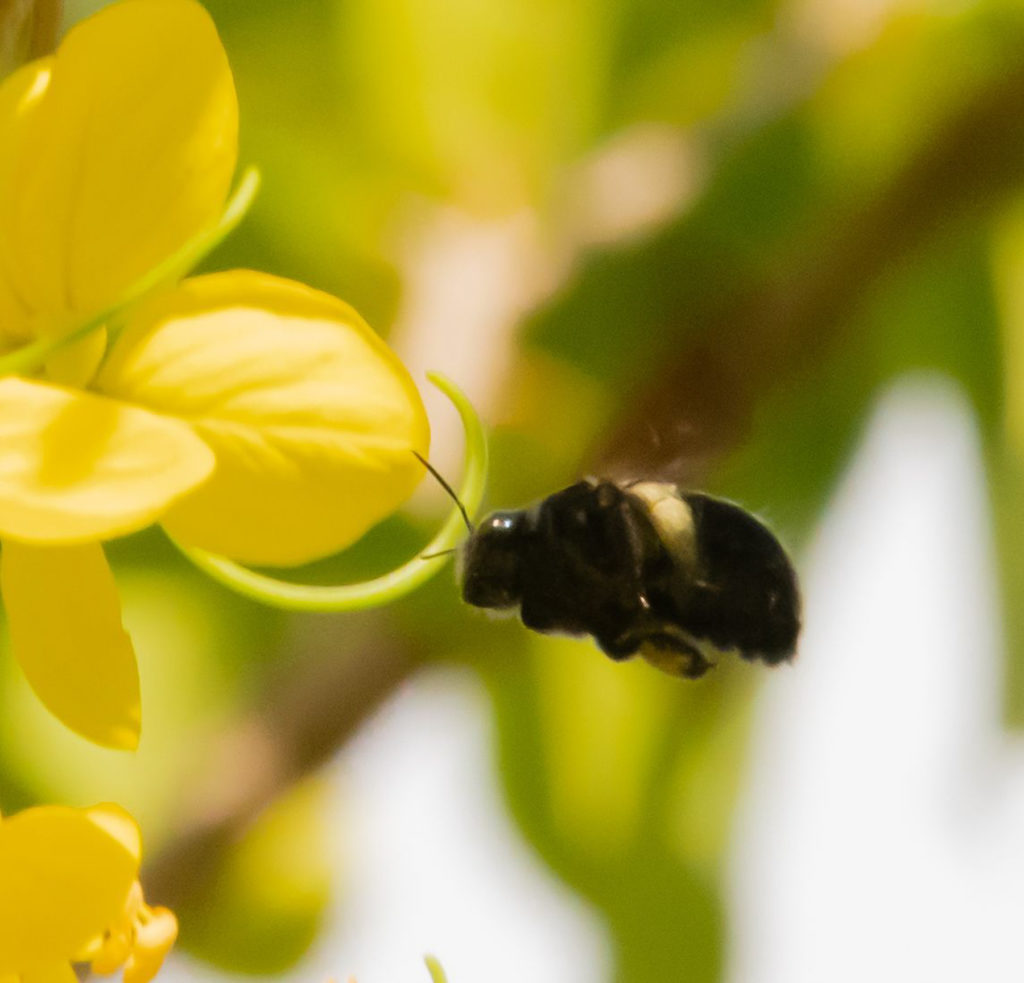
Finally I decided that the yellow on their backs was actually pollen from the flowers.
At first, the flower buds are like round yellow balls. Then the petals flip back and the reproductive parts of the flower are exposed.
The female part of the flower is a long, curved green tube. It is located very close to three yellow male stamens with pollen sacs on their tips.
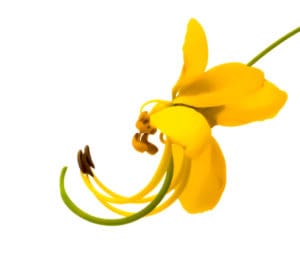
For the brief moment the bee is at each flower, its back comes in contact with those three pollen sacs.
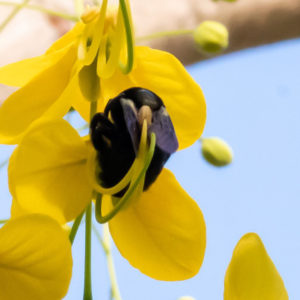
As the bee buzzes, pollen gets onto its back, giving it a yellow stripe. In that way it can transfer pollen between the male and female parts of the flowers.
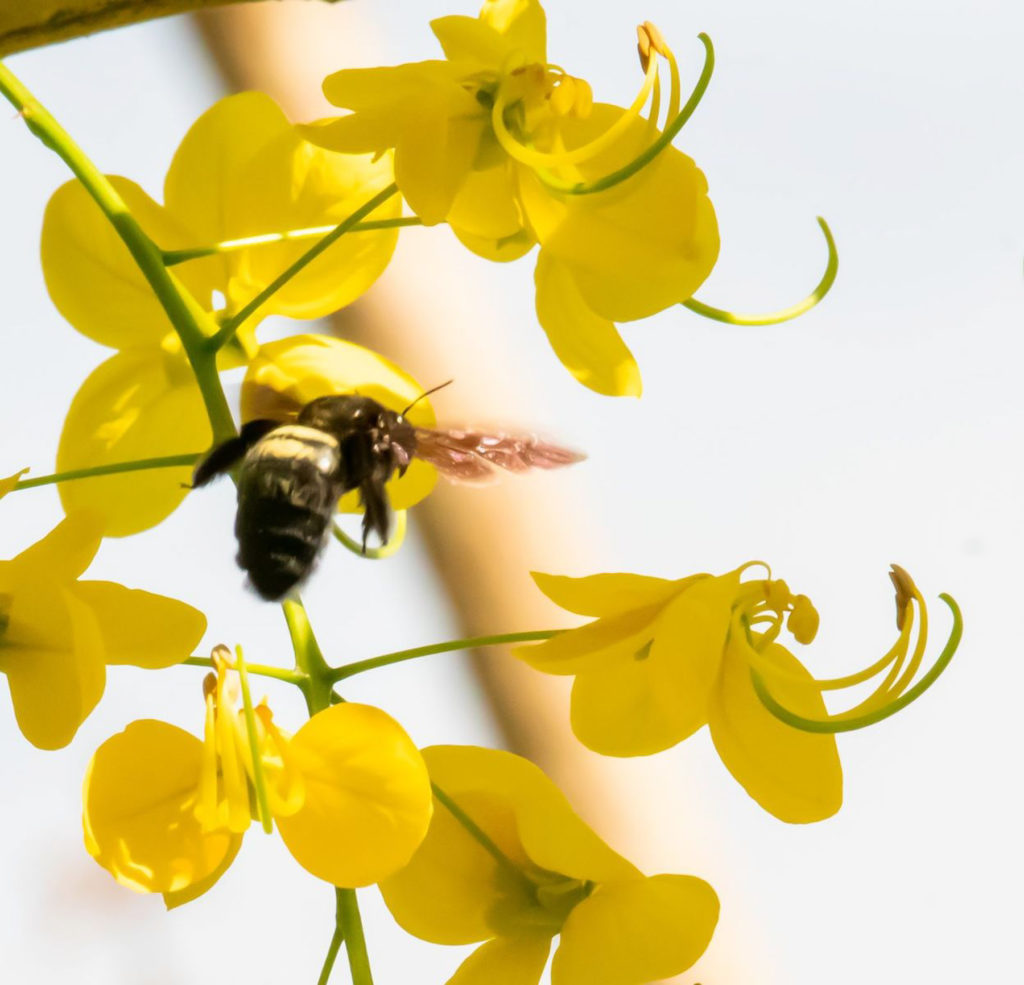
A few minutes taking photos in the yard had now led to many hours of research on trees and bees and the intricate ways flowers are structured in order to get themselves pollinated. My reading included references to Charles Darwin, and how in his later years he spent a great deal of time in his garden making observations to expand his understanding of evolution.
It was fun to feel a link to Darwin, no matter how slight. But also nice to know you don’t have to be a great scientist to look at bees and flowers in the yard and learn a little bit about them.
About Trees and Plants – A Project of the Unitarian Universalist Fellowship of St. John. See uufstjohn.com/treeproject and gvkarlsson.blogspot.com. Follow her on Instagram @gailkarlsson





